Toshiba Portege Z835: A New Ultrabook Appears
by Dustin Sklavos on November 16, 2011 2:50 AM EST- Posted in
- Laptops
- Intel
- Toshiba
- Sandy Bridge
- Ultrabook
Application and Futuremark Performance
To be perfectly honest, while benchmarking the Toshiba Portege Z835, I felt pretty underwhelmed. While the SSD makes day to day use feel snappy enough, this is the first time in a while that I've watched an Intel processor just slog through CPU-limited tests. The 1.4GHz nominal clock of the processor wouldn't seem so bad if it could turbo, but as a Core i3 you're basically stuck there, and no amount of Hyper-Threading really mitigates that. So while you'll see the Z835 perform reasonably well in the PCMarks, once we get to the more CPU-limited tasks you'll see it falter.
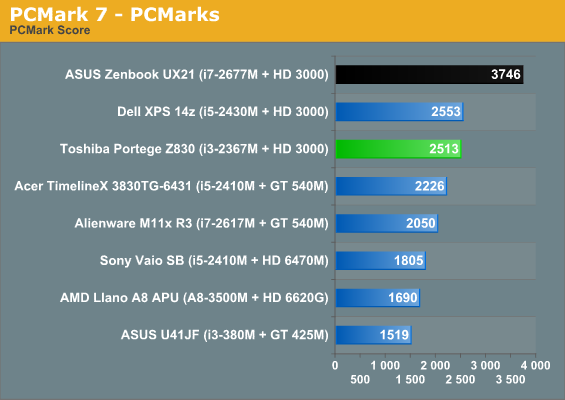
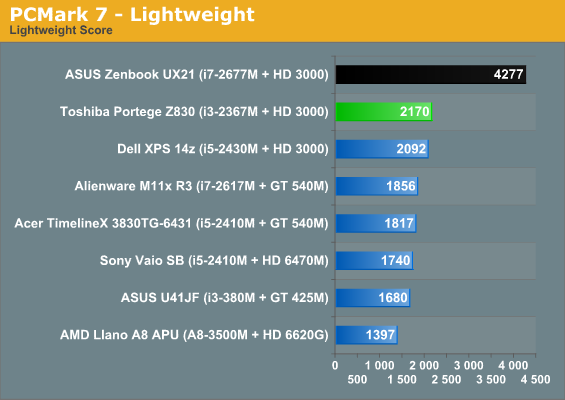
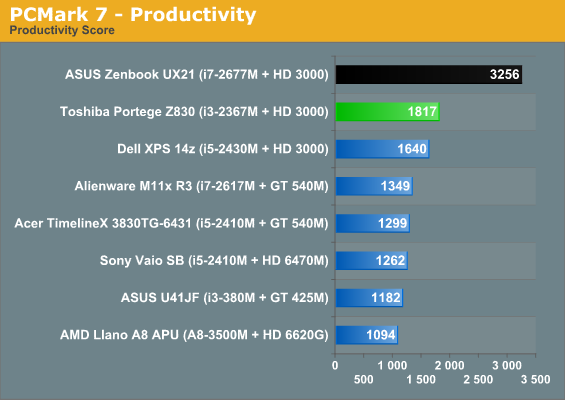
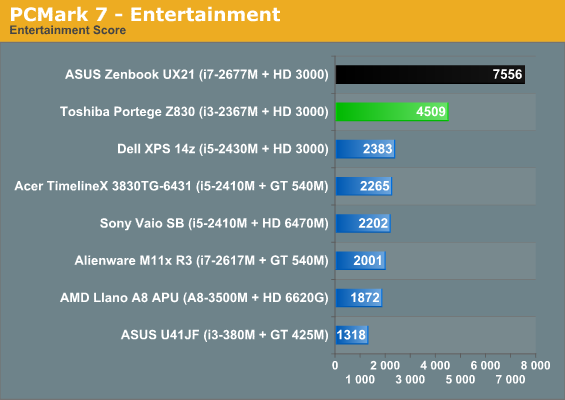
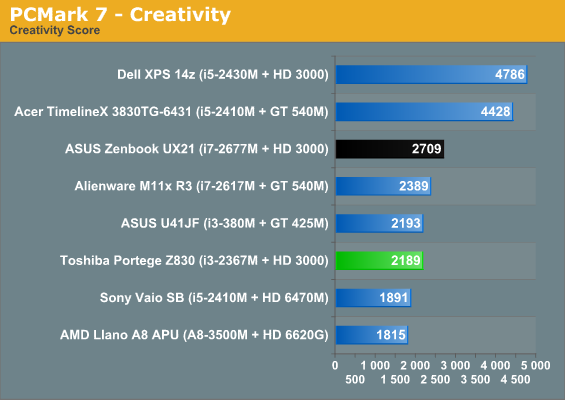
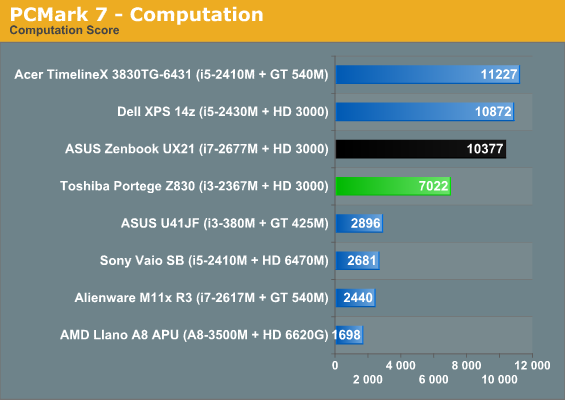
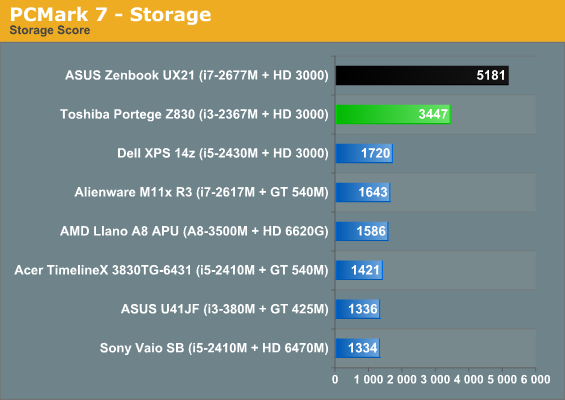
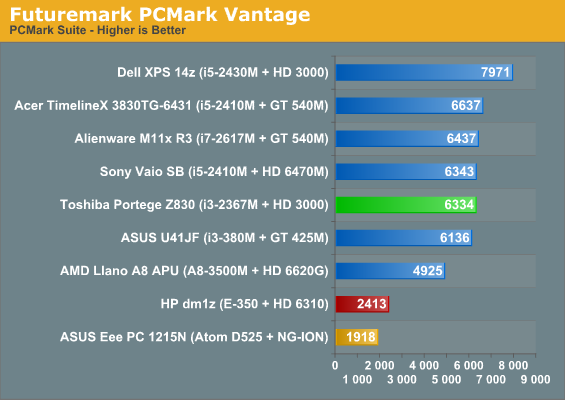
The SSD in the Z830 helps it tremendously, but the other ultrabook in our lineup, ASUS's Zenbook UX21, just spanks it relentlessly due to the faster processor. ASUS's Zenbook also benefits from a 6Gbps interface on the SSD and the hardware to use it; even though the Zenbooks use different SSDs, both of them are easily two to three times faster than the one included in the Z830. While it's a notable improvement over a mechanical drive, there's no denying the Z830's SSD is pokey compared to the competition.
You'll notice that the Z830 seems to do well in PCMark Vantage, though, but that's not the whole story. SSDs have a tendency to grossly inflate these scores, so it's telling that the massive inflation from the Z830's SSD only brings its PCMark Vantage score in line with normal notebooks.
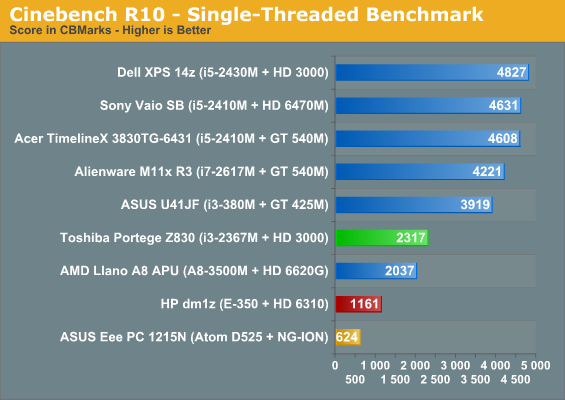
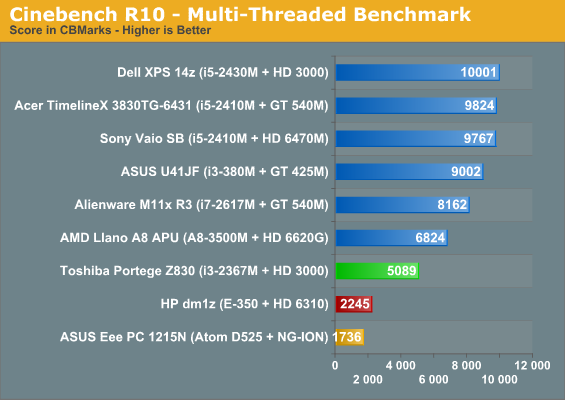
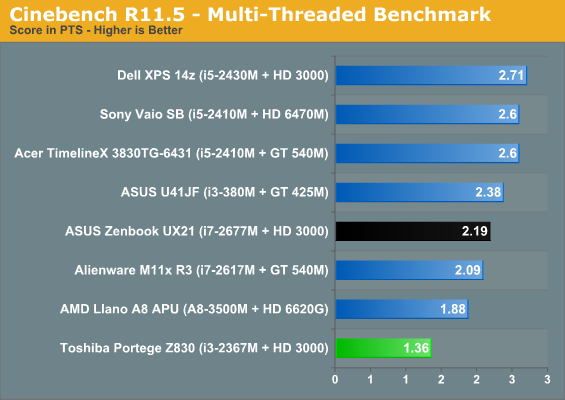

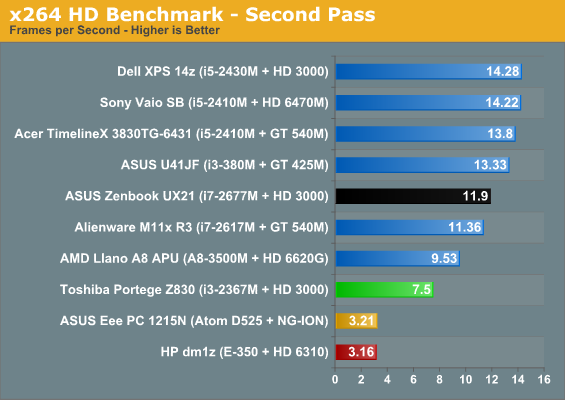
While the Portege Z830's i3 runs wild on the netbook CPUs (proving there's still a substantial gap in performance there), it gets absolutely murdered by everything else. Even the fairly anemic Husky cores in the Llano A8 run roughshod over the 1.4GHz i3. The loss of turbo severely curtails the i3.
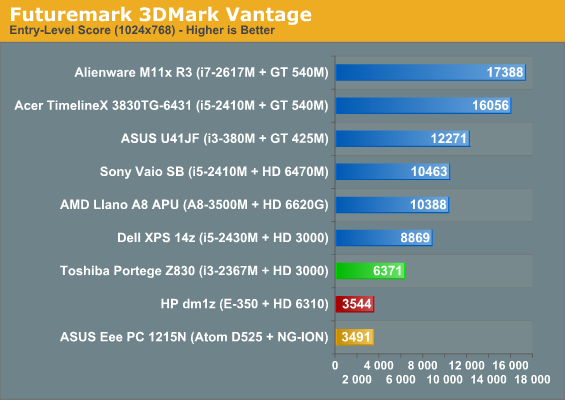

If you weren't clear on all the gaming you're not supposed to do on the Portege Z830, 3DMark should seal the deal. While Intel is generous enough to include the superior HD 3000 graphics in the i3-2367M, it's still inadequate for gaming at anything above minimum detail: processor power is just barely there, and the HD 3000 remains a ways behind even low-end dedicated options as a result.










76 Comments
View All Comments
r3loaded - Wednesday, November 16, 2011 - link
Amen to that. I also find it difficult to understand why it's so hard for them to put an IPS screen on them either. Practically every tablet that wants to be taken seriously has such a screen, yet it's a rarity outside of Lenovo/HP's top-end models. They shouldn't moan about cost either - it's a premium product, it deserves premium components and hence should have a premium price (which I and many others are ready to pay for).Tablets have 1280x800 IPS screens in a 10-inch form factor. We shouldn't have to put up with 1366x768 TN in a premium 13-inch ultra portable in 2011/2012.
solipsism - Wednesday, November 16, 2011 - link
IPS costs more money and users more power. On a 7" or 10" display that isn't too bad, especially when you powering it off ARM, but consider a proper notebook with a 13", 15," or 17" IPS panel. Thing gets a lot tricker.This will eventually change just as HiDPI resolutions on notebooks will eventually change, but that time just isn't hear yet. You can look at Apple's limited product line for examples: iPHone and iPad are iPS, iMacs and Cinema Displays are IPS, notebooks are all TN.
Penti - Thursday, November 17, 2011 - link
15" HP's with IPS-panels uses panels specced to 15W for example. You can't really use something that aren't manufactured.Narrlok - Wednesday, November 16, 2011 - link
ASUS UX31 Zenbook1600*900 on 13.3"
- check
Super good contrast and good brightness
- super high brightness like the MBA according to Anand's review of the UX21, contrast suffers though
Offer matte and glossy
- nope, no other alternatives either currently :( Sony does offer Vaios with a matte 13.1" screen with a 1600*900 resolution
medi01 - Wednesday, November 16, 2011 - link
16:9 and 16:10 screens suck badly. Bring good old 4:3 back and I'm sold.tzhu07 - Wednesday, November 16, 2011 - link
Are you 65 years old or something?HMTK - Wednesday, November 16, 2011 - link
No, he probably wants to do other things than watch movies. Like... work.JoeMcJoe - Wednesday, November 16, 2011 - link
Exactly.16:9 display ratios even on desktop monitors aren't the best for working on.
tzhu07 - Wednesday, November 16, 2011 - link
Oh really? I think my 2560 X 1440 desktop monitor suits me just fine for poductivity work. But then again, once you get up to the 2560 spec, 1440 or 1600 is plenty.MrSpadge - Wednesday, November 16, 2011 - link
My 1920x1200 IPS at work is also very nice for work. And with enough vertical space you can actually start to use the horizontal space by not running everything full screen.MrS